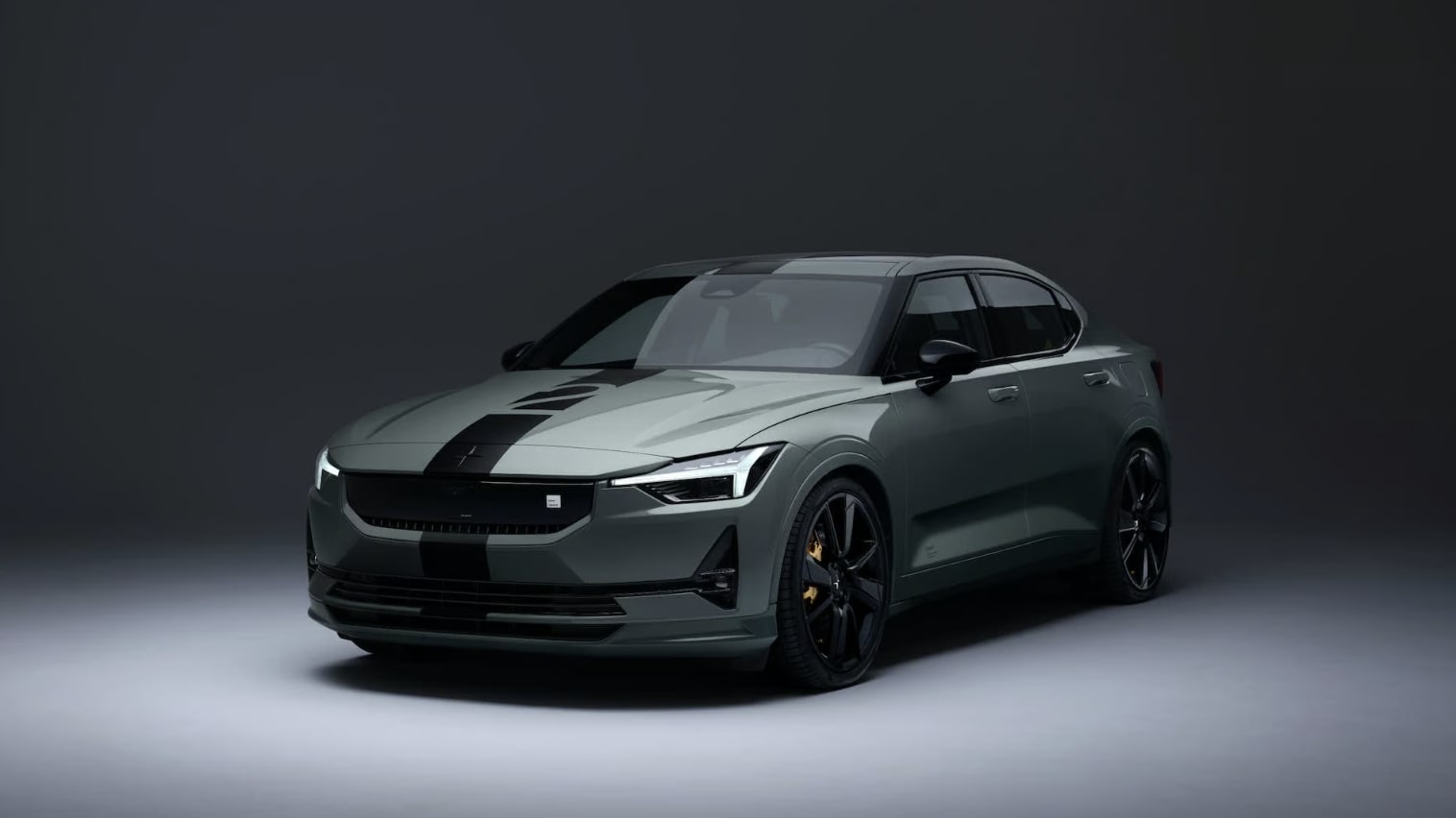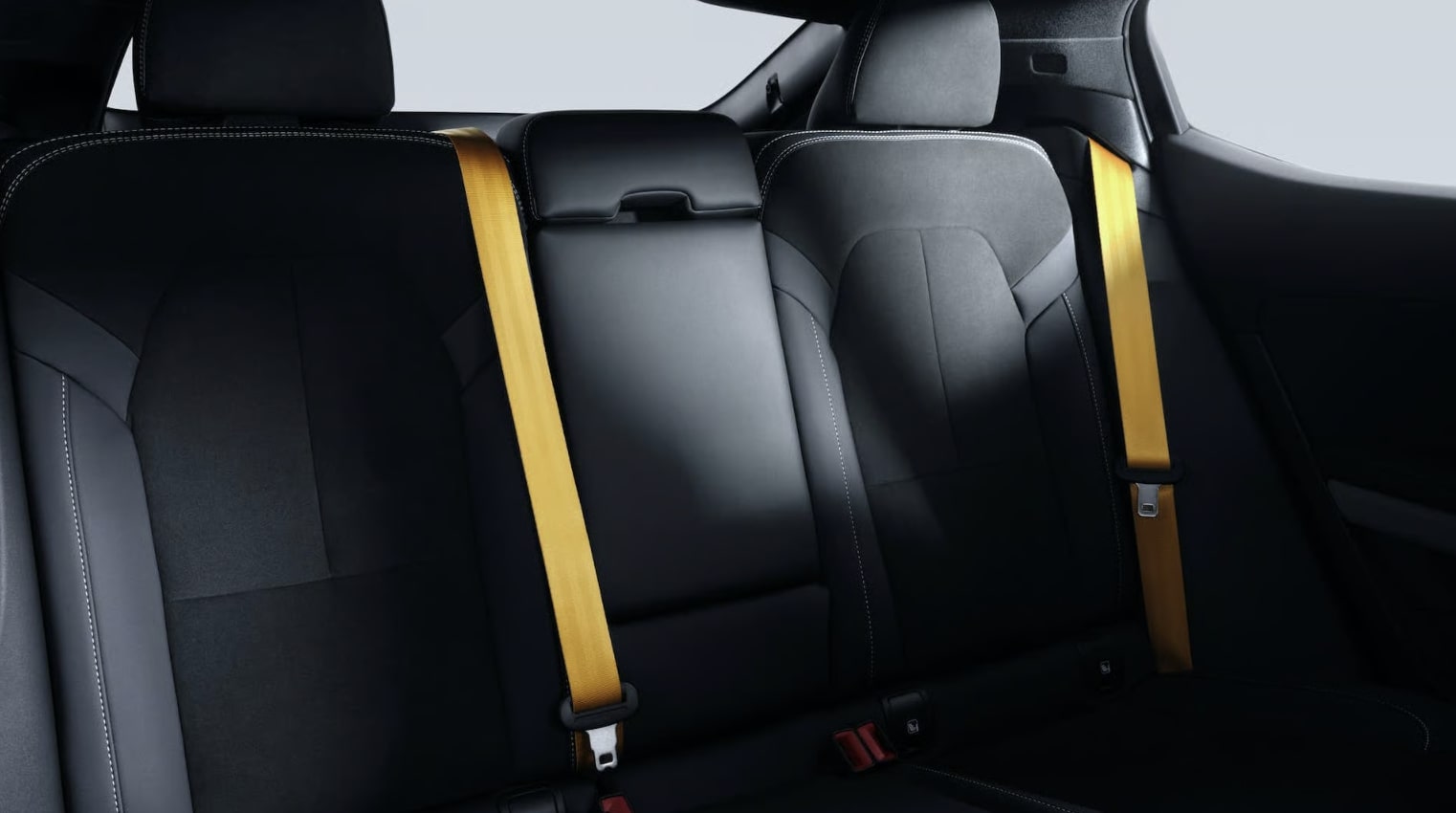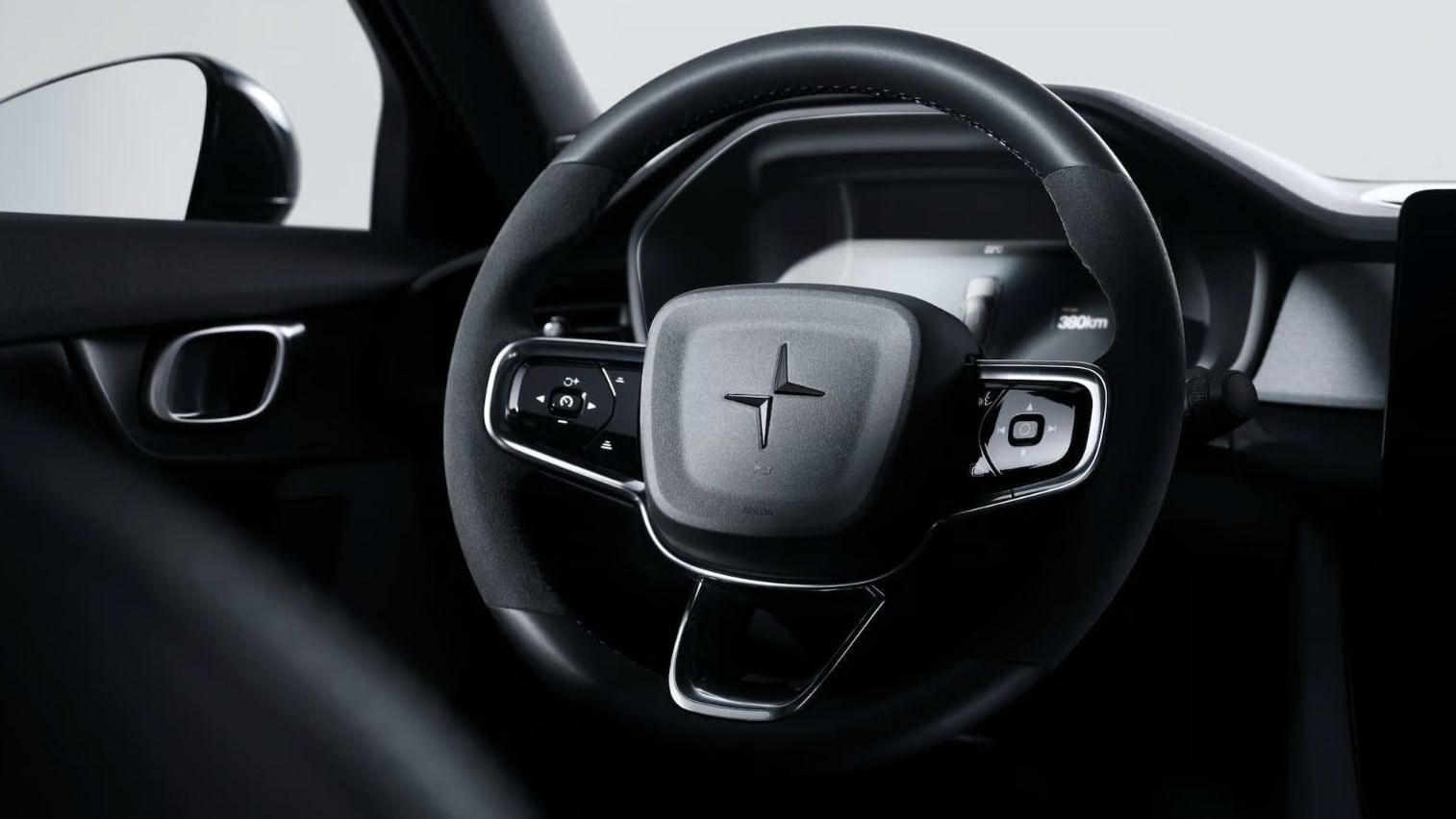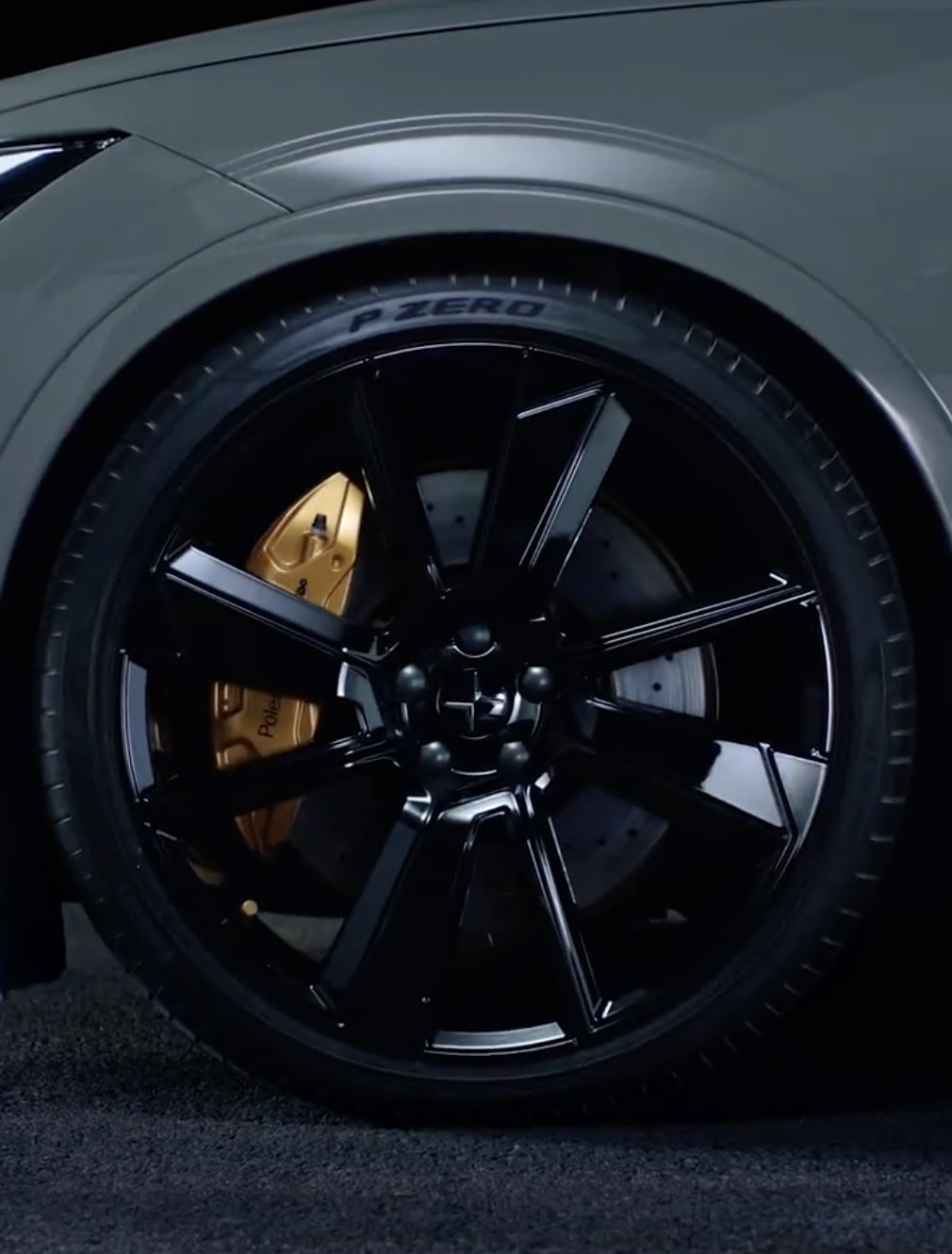

News
Polestar unveils crazy BST 230 — 476 HP, 4.2s 0-60 MPH, high-performance features
Polestar dropped new details on the Polestar 2 BST 230 this morning, an extremely limited edition version of the all-electric sedan. A succeeding version of the Polestar 2 BST 270 that was released last year, the Swedish automaker had improved by adding more power and new cosmetic features that set it apart from the rest.
Last week, Polestar teased the ‘next edition’ of the BST 270. BST is short for “beast,” and it surely is that. The 230 packed a 78 kWh battery and 469 horsepower, up from the standard 402 that the dual-motor Polestar 2 offers.
Limited edition, unlimited thrills. The Polestar 2 BST edition 230 is the latest rendition of our electric performance fastback, designed for optimised performance. Global production is limited to just 230 units, so you’ll have to be quick. https://t.co/dbwvGsUYZ8 pic.twitter.com/DJLO9f6KKP
— Polestar (@PolestarCars) March 21, 2023
However, Polestar got an additional seven horses out of the new BST 230, with its foot torque remaining the same at an impressive 680 Nm.
The changes from the 270 to the 230 were mainly based on “performance design,” Polestar said. Apart from the Polestar 2, which is geared toward mass-market application, the BST 230 features chassis modifications and performance features like upgraded brakes and dampers, tires suited for high-performance EV applications, and others.
“Limited drops like the BST edition 230 allow us to explore colors, graphics, and materials in faster and more creative ways,” Polestar CEO Thomas Ingenlath said.
Cosmetically, the BST 230 features exclusive green Nebula paint and a racing stripe, MicroSuede textile for the seats, and steering wheel inserts.
Credit: Polestar Credit: Polestar Credit: Polestar


It also features wheels tailored only to fit BST edition vehicles. The 21″ Gloss black diamond cut alloy wheels are fitted with Pirelli P-Zero tires, which are specifically designed to improve performance, handling, and grip for EVs.
Credit: Polestar
Performance Upgrades
Upgrades are listed by Polestar as follows:
- Bespoke Öhlins dampers
- 2-way adjustable DFV front, adjustable DFV rear
- Bespoke Pirelli P-Zero tires 245/35 R21
- Lowered Ride Height by ~25 mm
- Front Strut Bar
- Brembo 4-piston, 400 mm drilled & ventilated discs (front)
- Single-piston, 390 mm ventilated discs (rear)
It is no secret Polestar had a focus on engineering refined driving dynamics with the new BST 230.
The company included the Performance software upgrade as a standard feature, raising the motors’ combined output to 350 kW.
Limited Release
Polestar is only producing 230 units of the BST 230, and only 60 of those will be available in the United States and Canada.
Deliveries are expected to begin in Q3 2023.
I’d love to hear from you! If you have any comments, concerns, or questions, please email me at joey@teslarati.com. You can also reach me on Twitter @KlenderJoey, or if you have news tips, you can email us at tips@teslarati.com.

News
Tesla starts showing how FSD will change lives in Europe
Local officials tested the system on narrow country roads and were impressed by FSD’s smooth, human-like driving, with some calling the service a game-changer for everyday life in areas that are far from urban centers.

Tesla has launched Europe’s first public shuttle service using Full Self-Driving (Supervised) in the rural Eifelkreis Bitburg-Prüm region of Germany, demonstrating how the technology can restore independence and mobility for people who struggle with limited transport options.
Local officials tested the system on narrow country roads and were impressed by FSD’s smooth, human-like driving, with some calling the service a game-changer for everyday life in areas that are far from urban centers.
Officials see real impact on rural residents
Arzfeld Mayor Johannes Kuhl and District Administrator Andreas Kruppert personally tested the Tesla shuttle service. This allowed them to see just how well FSD navigated winding lanes and rural roads confidently. Kruppert said, “Autonomous driving sounds like science fiction to many, but we simply see here that it works totally well in rural regions too.” Kuhl, for his part, also noted that FSD “feels like a very experienced driver.”
The pilot complements the area’s “Citizen Bus” program, which provides on-demand rides for elderly residents who can no longer drive themselves. Tesla Europe shared a video of a demonstration of the service, highlighting how FSD gives people their freedom back, even in places where public transport is not as prevalent.
What the Ministry for Economic Affairs and Transport says
Rhineland-Palatinate’s Minister Daniela Schmitt supported the project, praising the collaboration that made this “first of its kind in Europe” possible. As per the ministry, the rural rollout for the service shows FSD’s potential beyond major cities, and it delivers tangible benefits like grocery runs, doctor visits, and social connections for isolated residents.
“Reliable and flexible mobility is especially vital in rural areas. With the launch of a shuttle service using self-driving vehicles (FSD supervised) by Tesla in the Eifelkreis Bitburg-Prüm, an innovative pilot project is now getting underway that complements local community bus services. It is the first project of its kind in Europe.
“The result is a real gain for rural mobility: greater accessibility, more flexibility and tangible benefits for everyday life. A strong signal for innovation, cooperation and future-oriented mobility beyond urban centers,” the ministry wrote in a LinkedIn post.
News
Tesla China quietly posts Robotaxi-related job listing
Tesla China is currently seeking a Low Voltage Electrical Engineer to work on circuit board design for the company’s autonomous vehicles.

Tesla has posted a new job listing in Shanghai explicitly tied to its Robotaxi program, fueling speculation that the company is preparing to launch its dedicated autonomous ride-hailing service in China.
As noted in the listing, Tesla China is currently seeking a Low Voltage Electrical Engineer to work on circuit board design for the company’s autonomous vehicles.
Robotaxi-specific role
The listing, which was shared on social media platform X by industry watcher @tslaming, suggested that Tesla China is looking to fill the role urgently. The job listing itself specifically mentions that the person hired for the role will be working on the Low Voltage Hardware team, which would design the circuit boards that would serve as the nervous system of the Robotaxi.
Key tasks for the role, as indicated in the job listing, include collaboration with PCB layout, firmware, mechanical, program management, and validation teams, among other responsibilities. The role is based in Shanghai.
China Robotaxi launch
China represents a massive potential market for robotaxis, with its dense urban centers and supportive policies in select cities. Tesla has limited permission to roll out FSD in the country, though despite this, its vehicles have been hailed as among the best in the market when it comes to autonomous features. So far, at least, it appears that China supports Tesla’s FSD and Robotaxi rollout.
This was hinted at in November, when Tesla brought the Cybercab to the 8th China International Import Expo (CIIE) in Shanghai, marking the first time that the autonomous two-seater was brought to the Asia-Pacific region. The vehicle, despite not having a release date in China, received a significant amount of interest among the event’s attendees.
Elon Musk
Elon Musk and Tesla AI Director share insights after empty driver seat Robotaxi rides
The executives’ unoccupied tests hint at the rapid progress of Tesla’s unsupervised Robotaxi efforts.

Tesla CEO Elon Musk and AI Director Ashok Elluswamy celebrated Christmas Eve by sharing personal experiences with Robotaxi vehicles that had no safety monitor or occupant in the driver’s seat. Musk described the system’s “perfect driving” around Austin, while Elluswamy posted video from the back seat, calling it “an amazing experience.”
The executives’ unoccupied tests hint at the rapid progress of Tesla’s unsupervised Robotaxi efforts.
Elon and Ashok’s firsthand Robotaxi insights
Prior to Musk and the Tesla AI Director’s posts, sightings of unmanned Teslas navigating public roads were widely shared on social media. One such vehicle was spotted in Austin, Texas, which Elon Musk acknowleged by stating that “Testing is underway with no occupants in the car.”
Based on his Christmas Eve post, Musk seemed to have tested an unmanned Tesla himself. “A Tesla with no safety monitor in the car and me sitting in the passenger seat took me all around Austin on Sunday with perfect driving,” Musk wrote in his post.
Elluswamy responded with a 2-minute video showing himself in the rear of an unmanned Tesla. The video featured the vehicle’s empty front seats, as well as its smooth handling through real-world traffic. He captioned his video with the words, “It’s an amazing experience!”
Towards Unsupervised operations
During an xAI Hackathon earlier this month, Elon Musk mentioned that Tesla owed be removing Safety Monitors from its Robotaxis in Austin in just three weeks. “Unsupervised is pretty much solved at this point. So there will be Tesla Robotaxis operating in Austin with no one in them. Not even anyone in the passenger seat in about three weeks,” he said. Musk echoed similar estimates at the 2025 Annual Shareholder Meeting and the Q3 2025 earnings call.
Considering the insights that were posted Musk and Elluswamy, it does appear that Tesla is working hard towards operating its Robotaxis with no safety monitors. This is quite impressive considering that the service was launched just earlier this year.








